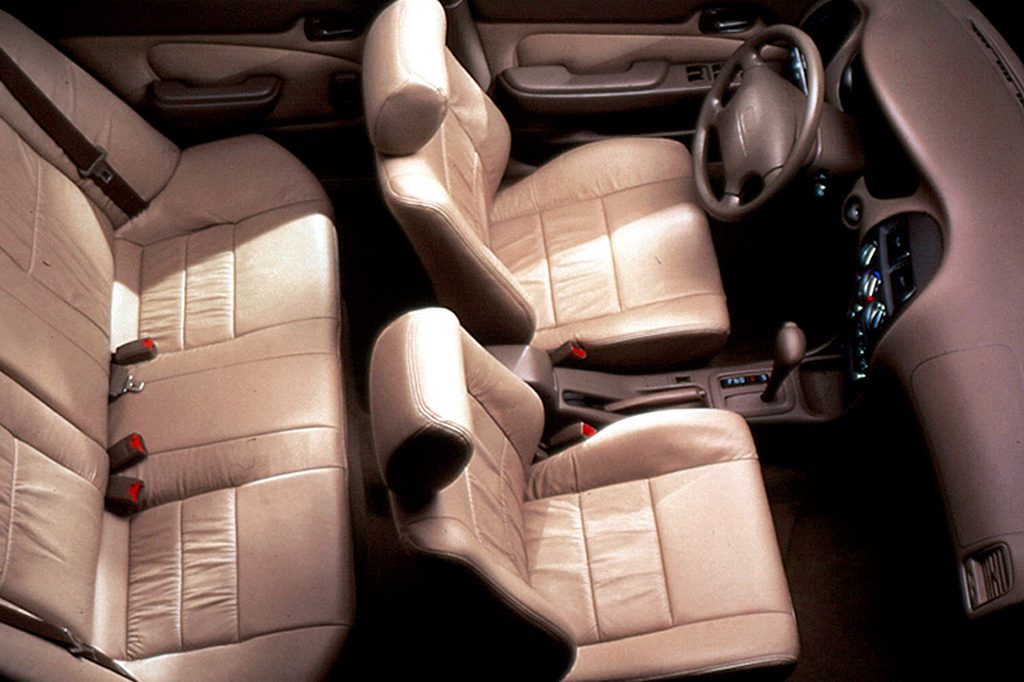| Compact car; Built in USA |
|
|
| Good condition price range: $1,300 – $2,300* |

1994 Geo Prizm LSi

1993 Geo Prizm LSi

1996 Geo Prizm

1993 Geo Prizm LSi interior

1996 Geo Prizm LSi interior
| Pros: |
|
| Cons: |
|
Few small cars are more polished than a Prizm, or as well-constructed. We rank it right alongside the Toyota Corolla and Honda’s Civic as top subcompacts.
Overview
Sharing its basic design with the Toyota Corolla, as it had in the prior generation, the roundly restyled front-drive subcompact sedan from Chevrolet’s Geo import group is a little longer than its predecessor. Interior space also expanded a bit, as did the sedan’s trunk capacity. Only one body style went on sale: a 4-door sedan. A driver-side airbag was initially standard in both the base and LSi versions. Antilock braking was optional. Base engine was a 105-horsepower, twin-cam 16-valve, 1.6-liter four. A 115-horsepower 1.8-liter engine was available in the LSi edition.
Yearly Updates
| 1994 Prizm A passenger-side airbag was added for 1994. Seatbelts were revised to permit easier installation of child safety seats without using a locking clip. |
| 1995 Prizm Modest appearance and trim changes marked the ’95 Prizms. |
| 1996 Prizm The optional 1.8-liter engine dropped 10 horsepower this year, though its torque output grew. |
| 1997 Prizm Power steering became standard rather than optional on the base version and the standard 1.6-liter engine dropped five horsepower (to 100), but gained five pound-feet of torque (to 105). An all-new Prizm was waiting in the wings for ’98, but it would be badged a Chevrolet. |
